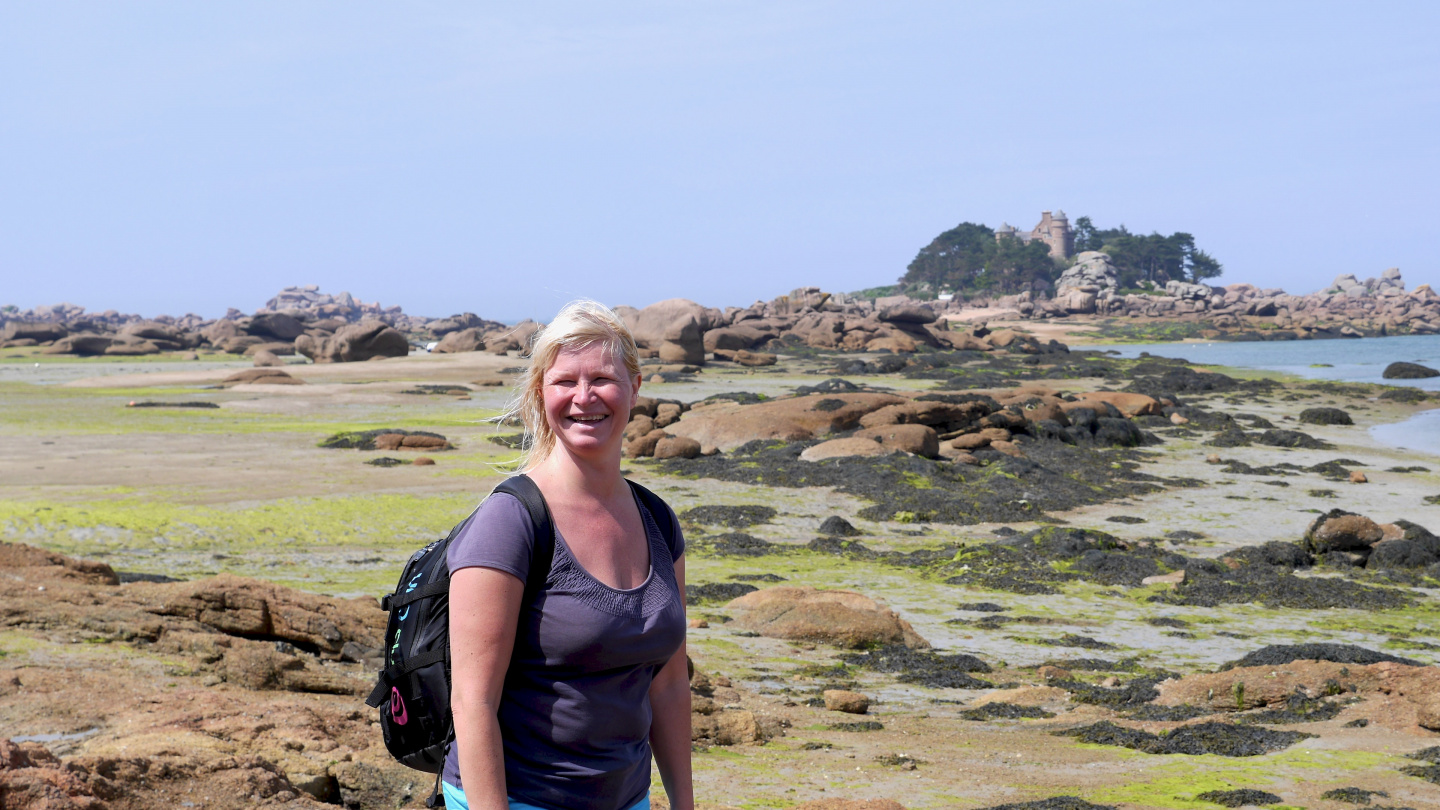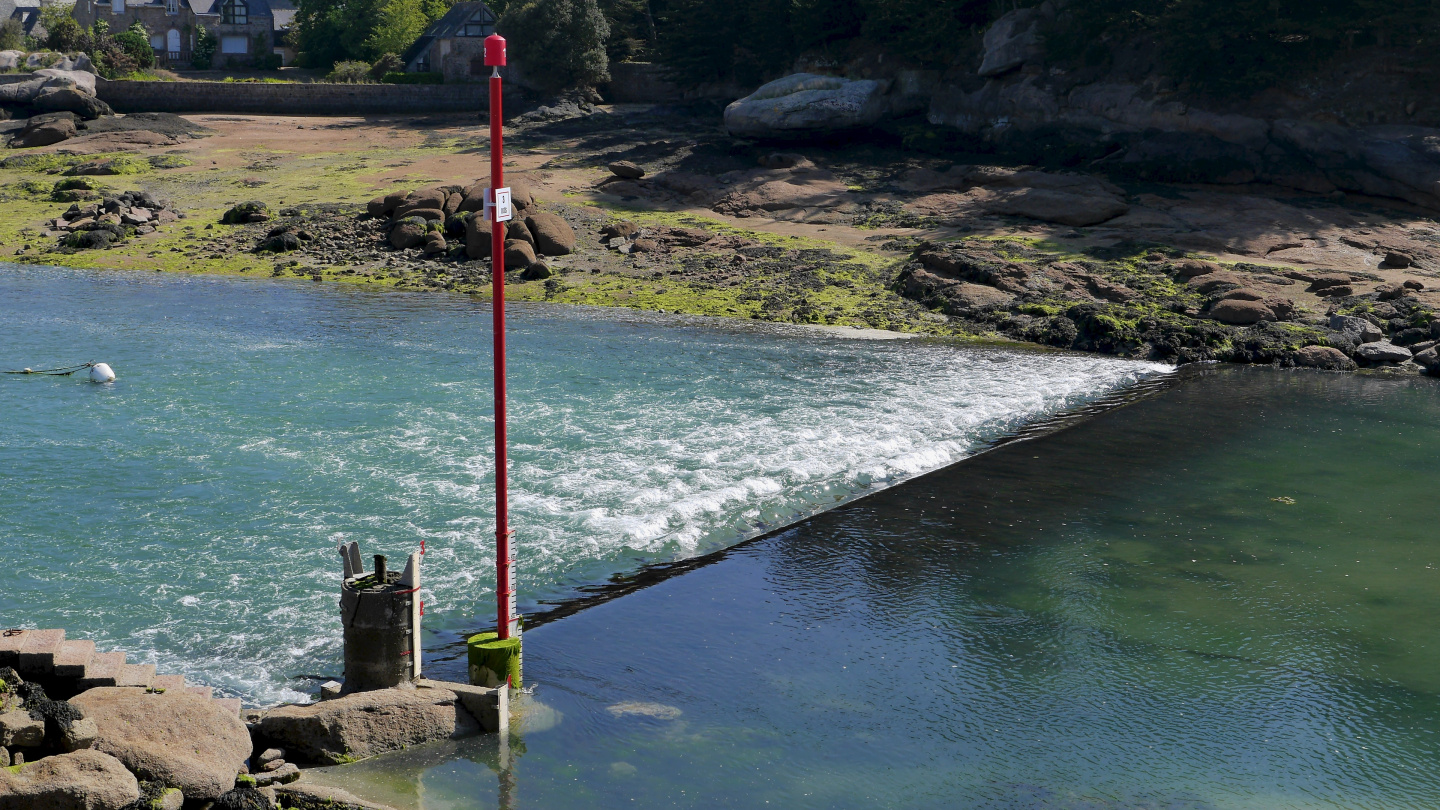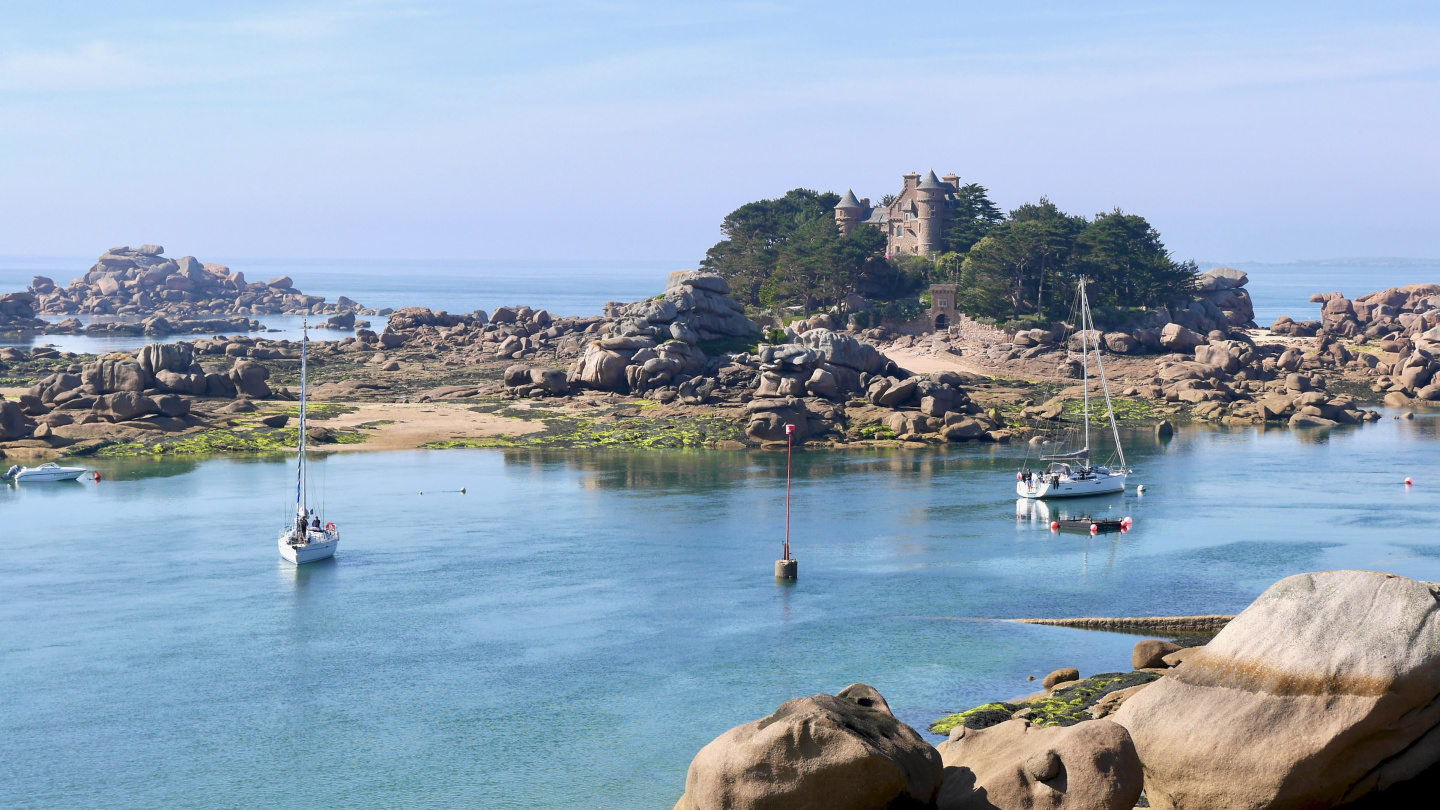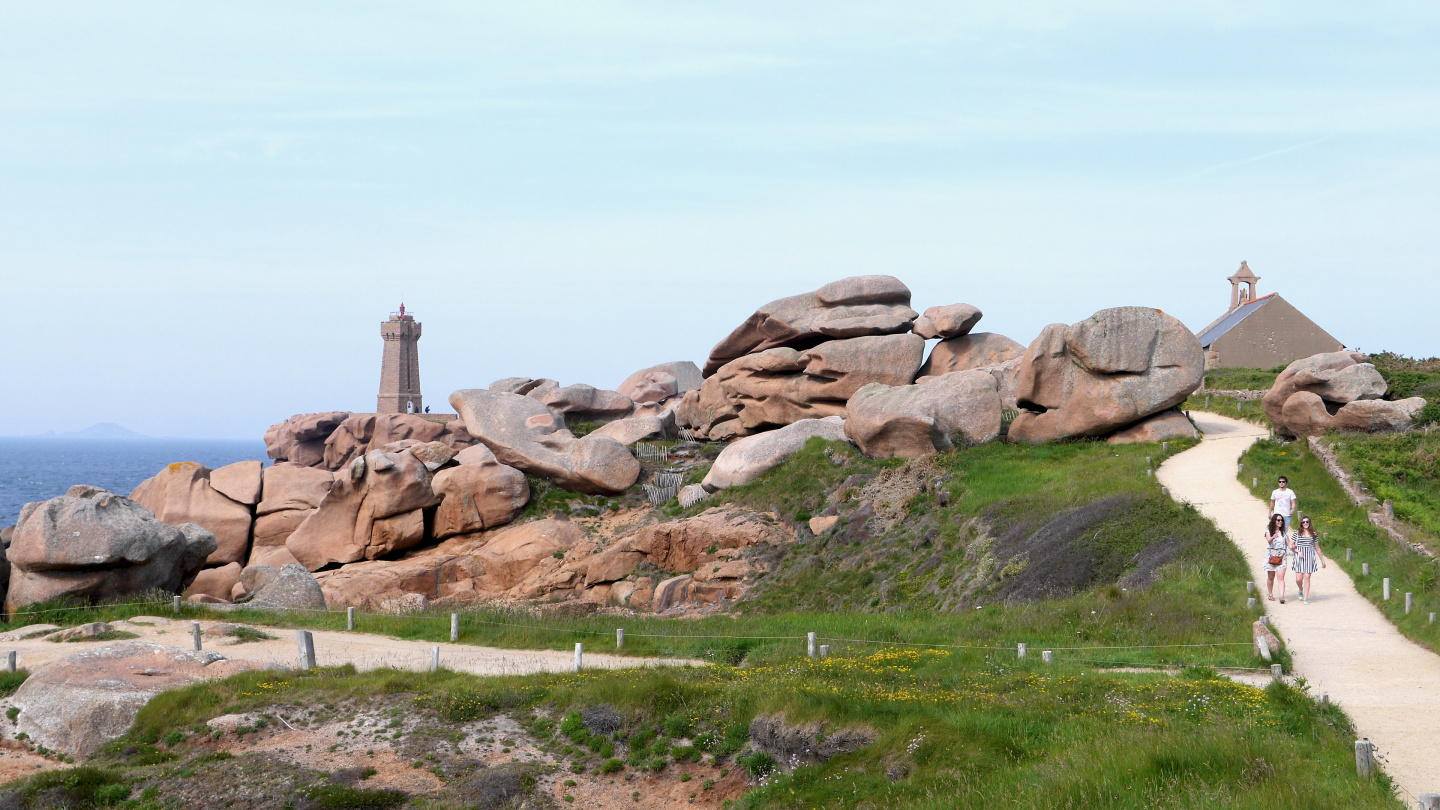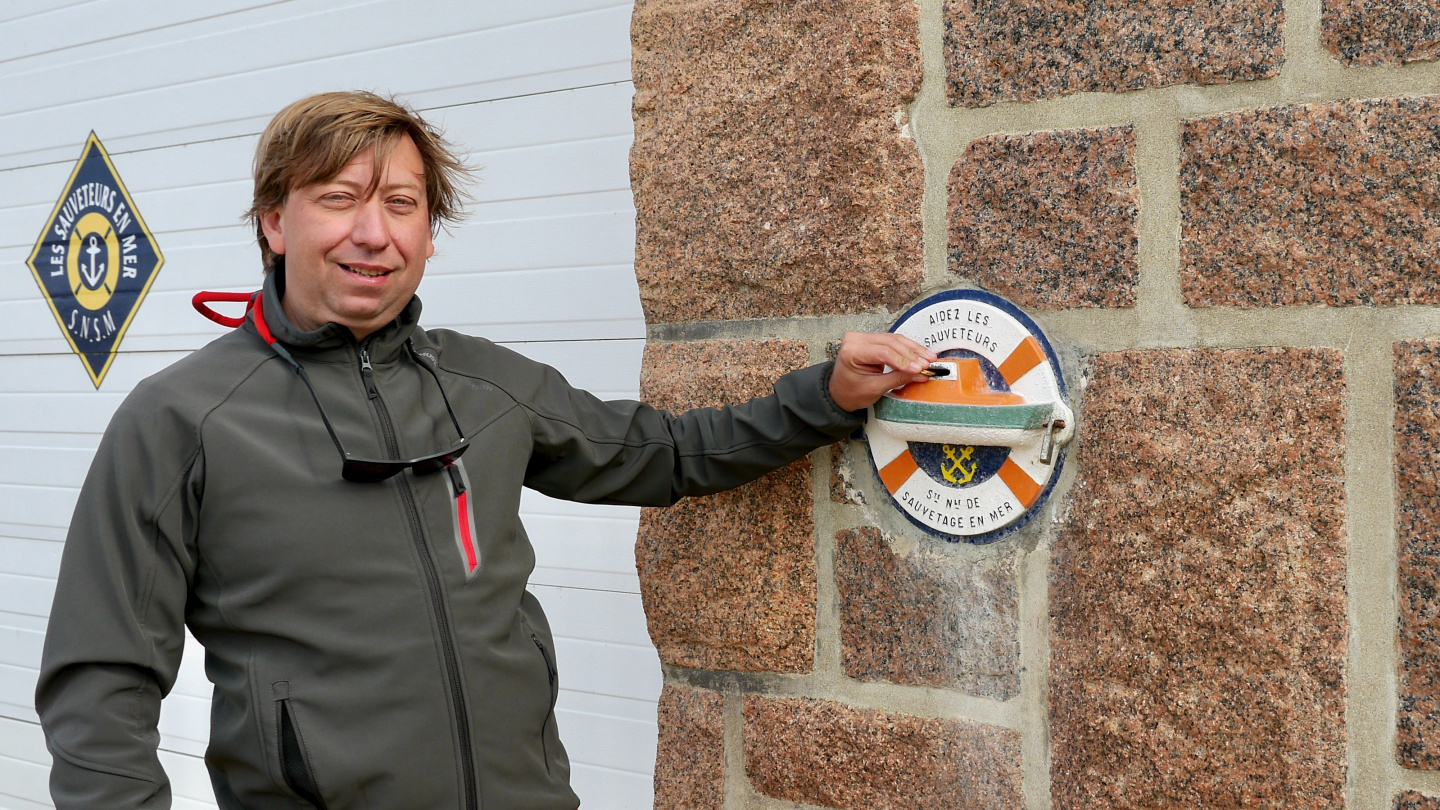Here on the coast of North Brittany there are several places that can be reached only during the high tide. Both, our departure port Morlaix and our destination Ploumanac’h, are such a harbours. So we had to make a plan how to spend 12 hours on 27 mile voyage.
Our idea was to depart at high water and sail to the Bay of Morlaix. We could drop anchor and take our dinghy for exploring the Château du Taureau fort. However there was a thick fog and the weather was not inspiring at all with a damp feeling. On the other hand the wind should start blowing from north in the afternoon. So we put the engine into idle and slowly floated northbound onto the sea, and then in the afternoon we could raise the sails with the northerly wind and sail towards east to the lagoon of Plounanac’h. Now in the early summer the hull of the boat is still clean and with the engine idling we made 3.6 knots 🙂
As the wind was starting to blow we immediately hoisted the sails. The tide was still from east against us so we moved forward with the gusts and backward with the tide for rest of the time. This was fine with us as we had plenty of time and we enjoyed being at sea as Suwena was going back and forth.
The weather forecast showed sunshine for the afternoon but the Sun was unable to penetrate through the thick fog. Instead the fog got thicker while time was passing. Also the wind never came despite of numerous puffs. Finally we gave up and started Perkins for motoring towards Ploumanac’h. We had to be there in 12 hours – funny 🙂
When we were closing to Ploumanac’h we got a company for half an hour. Suddenly there was a vessel approaching us fast from stern on port side that did not have an AIS transmitter. Andrus was already worrying as the other vessel did not reduce speed or alter the course. It only continued on a collision course with Suwena. About half a mile from us it matched our speed and set a parallel course. Even with binoculars we could not see with whom we were sailing in a thick fog. After half an hour our companion made a u-turn and disappeared as fast as it arrived. We think it was French coastguard but it remains a mystery.
Near Ploumana’h the current increased to three knots and the water was making whirls between the rocks. The fog was still thickening and visibility was only a mere 200 metres. Ploumanac’h is a lagoon in the middle of cliffs and a sill separates it from the tidal sea. The entrance channel is winding between the rocks and cliffs and it dries at the low water.
Ploumana’h can be entered about +-3 hours of high tide and we were arriving about two hours before it. The pilot book also told that there is a tidal gauge next to the sill for checking the water depth.
Additional challenge was that the current from rising tide pushed us forward with quite a speed. Andrus had to drive faster than current for keeping the boat under control. Near the harbour the visibility got still worse. The fog is really deceptive as the distances are blurred. Once the lateral boys come visible it feels like the boat is already on top of them. And then there was a fishing boat meeting us in the narrow entrance channel in the middle of thickest fog.
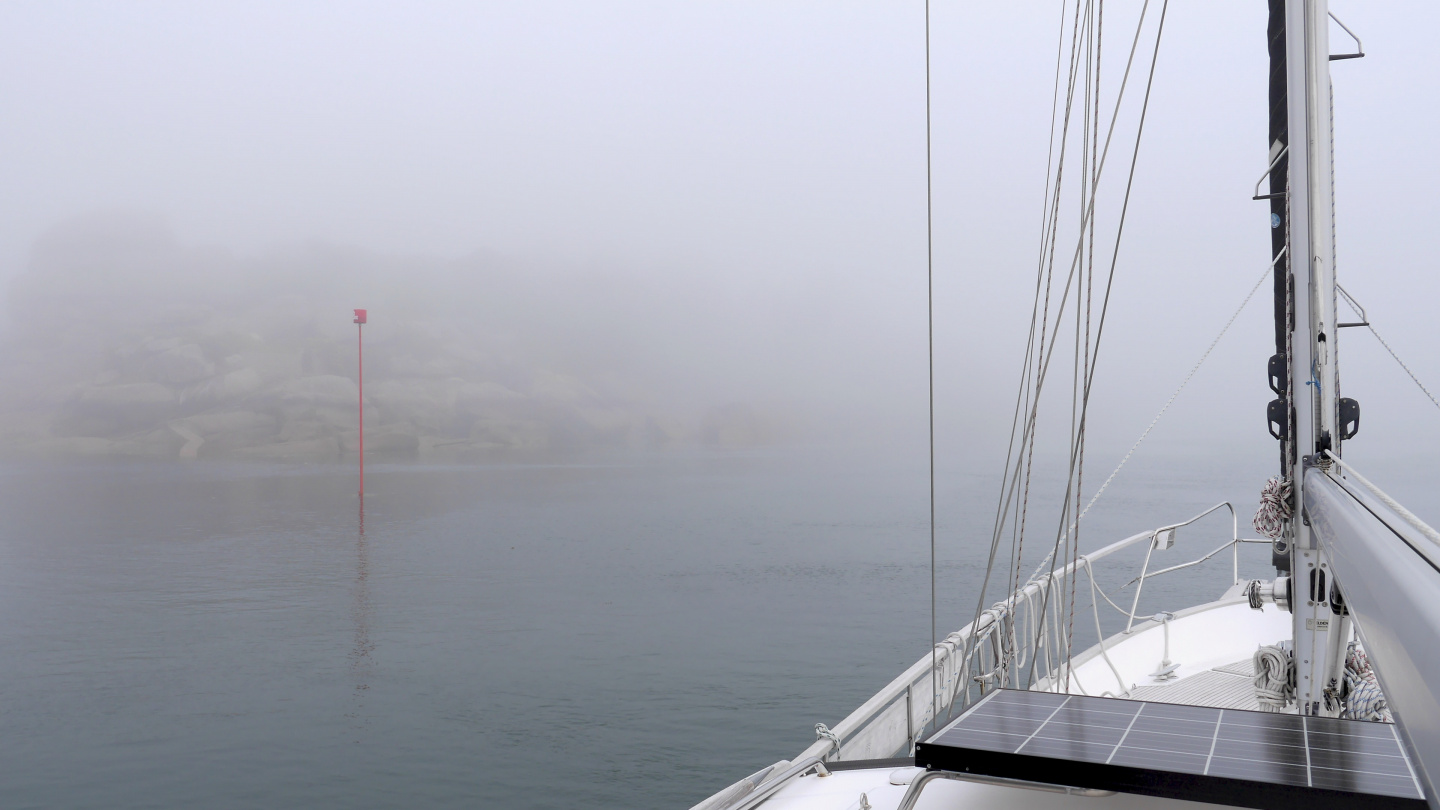
It was really exciting to drive by radar in the middle of rocks listening to the echo of our voices from the nearby cliffs. We did not see the tidal gauge at the sill and we were approaching the sill dead slow. Finally there was again more water and we had arrived to the lagoon.
Tom Cunliffe wrote in his book, the Shell Channel Pilot that,
“The buoys consist of two fenders joined by aluminium rods. They are ahead as you enter. Pick one up by its pick-up line and secure alongside it.”
Sounds simple but there were no pick-up lines for catching the buoys. The lagoon is filled with strings of buoys. The boats are made fast from both the bow and the stern so called fore-and-aft mooring. Each of these mooring buys are actually combined from four to five separate buoys. And from those the two or three middle buoys are floating as fenders between two boats allowing the usage of mooring from both sides.
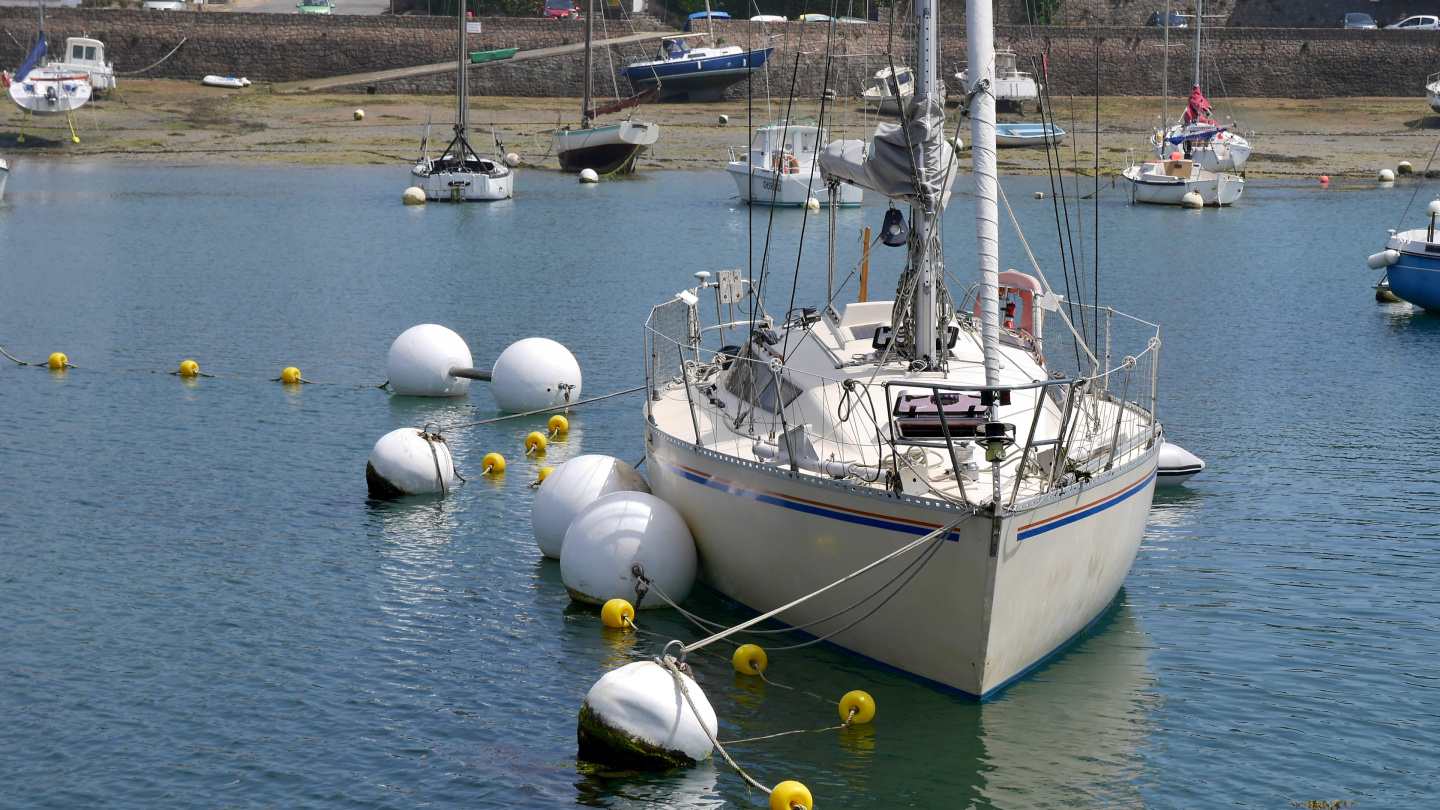
The buoys of the lagoon are meant for boats with the maximum length of 12 metres and draft of 1.5 metres. Tom Cunliffe wrote that he have been in Ploumanac’h just fine with his boat that is larger and have a depth of 2 meters. The keel would nicely be sucked into the muddy sea bottom.
Suwena’s draft is 1.85 m. The neighbour boat gave us an advice where the water might be deeper. We slept through the night not noticing that Suwena was standing on her keel at the low water. Next day we could see ourselves that it’s true. She will be on her keel when there is no more water to float her.
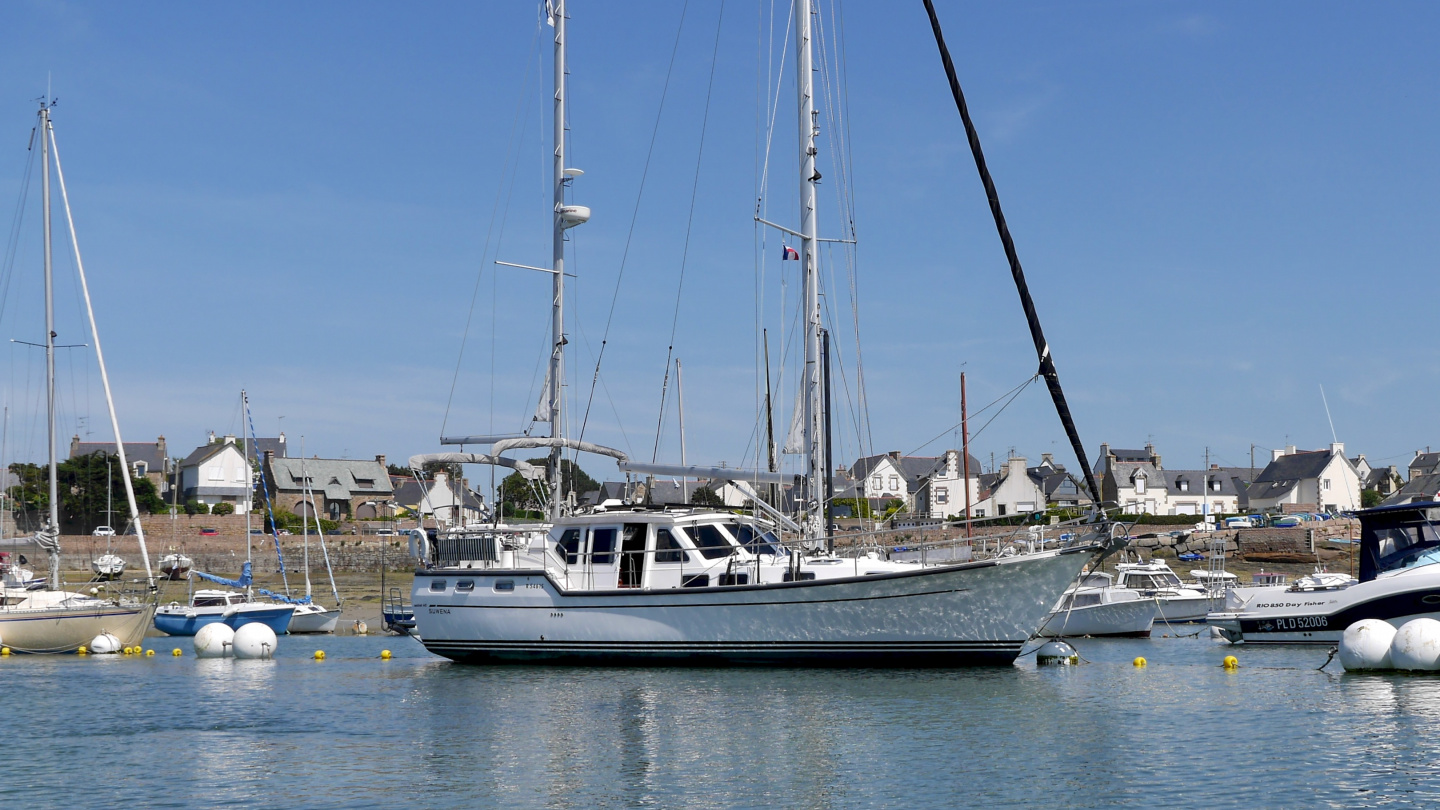
We went ashore for the first time during the low water. The water level was so low that we could not reach the slip with the dinghy. There was one meter of mud between Pikku Suwena and the slip. Fortunately I was wearing the rubber flats which are good for stepping into water. It was more than stepping this time as there was no bottom. My foot sank deeper and deeper into the mud. If I had come with wellies like I thought at first, for sure they would have been permanently sucked in 🙂 The mud was like a glue but I managed to get my shoe up. Fortunately a local guy arrived to the slip with his dinghy waiting for the higher water. We gave our painter to him and he pulled us forward for the final missing meter. Soon Pikku Suwena was firmly on the terra firma.
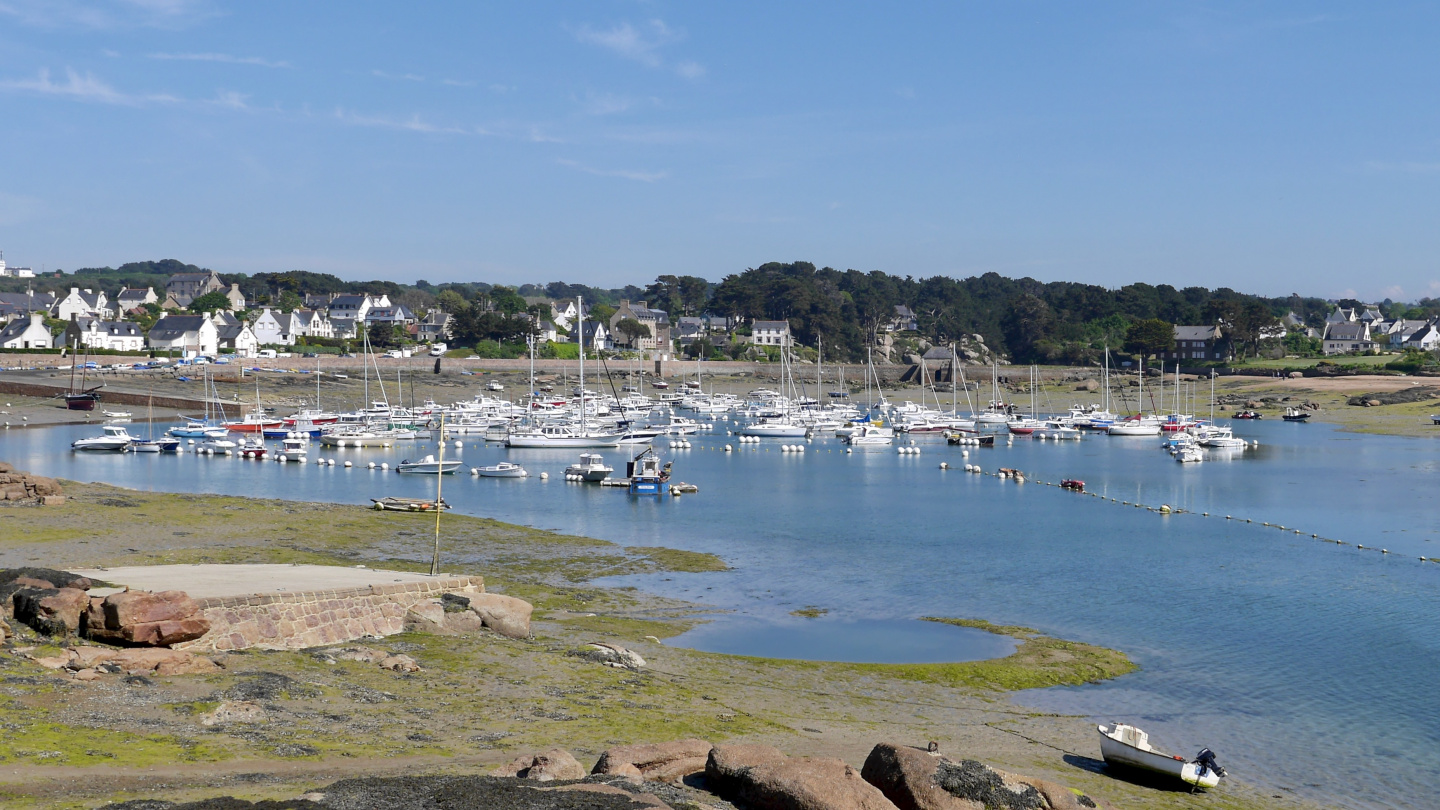
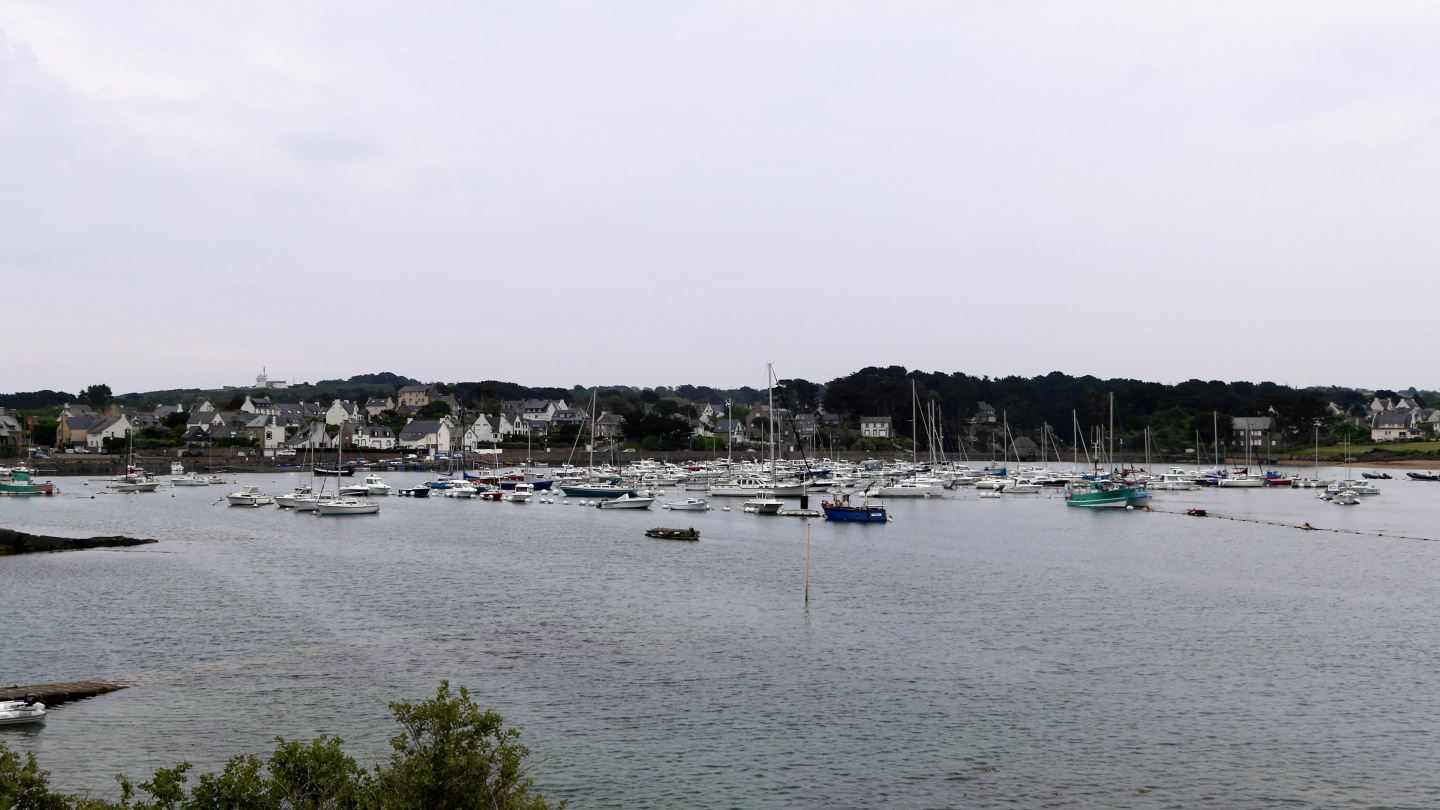
Now we are really convinced with that we do not have to worry about Suwena during the low tide, as the mud will suck the keel of a 20-ton boat as firmly as my foot.
When returning from the centre of Ploumanac’h it was a high tide. Fortunately we earlier changed her place by pulling her few meters higher up on the slip for making sure she is fine at high tide. Anyhow she was happily floating about a metre from the shore. If we had left her to original place where we made her fast we should have swam for a dinghy. Our return trip started funnily as we drove on the slip that was underwater towards Suwena. For the following visits we planned landing time better with the tide. We can really see that we’re from the Baltic Sea and the tide can still surprise us.
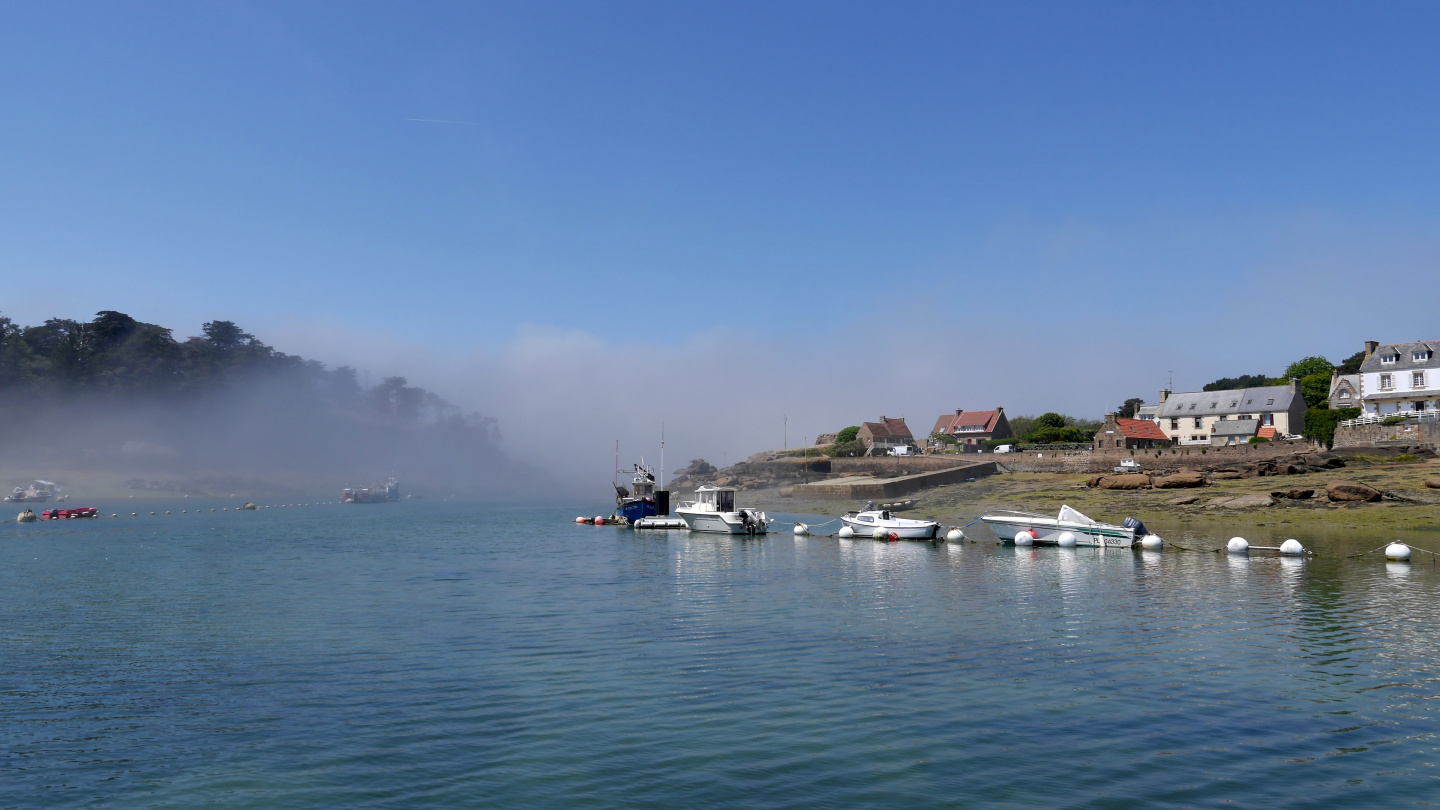
Plounac’h is really a beautiful area of rose granite. There are a lot of walkers and climbers on paths and cliffs. During the low tide it was nice to walk on a dried seabed and try to solve the labyrinth for having as much dry land under feet as possible. There were patches of thin sand and coarse gravel. Then we reached massive granite boulders full of deep grooves made by flowing water. We were climbing up and down while hopping from stone to stone – this was fun! Some people were sunbathing on the rocks while others were driving cars next to the boats that were now on a ground for easy maintenance. No wonder why the pilot book warns for looking out for the rising tide, otherwise the dinner could be missed while waiting for the next low tide to get off the 